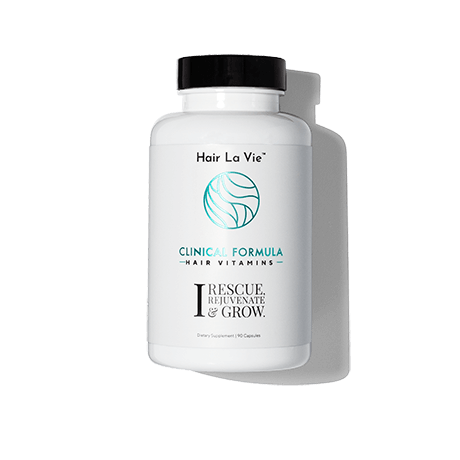Many people seek out hair loss treatments as a way to regrow hair or keep the hair they have.
For men, hair loss is the rule, not the exception: half of all men have visible hair loss by age 50, and for many men, the process of hair loss can start early in their 20s.
There are a lot of quack remedies out there that claim to restore your lost hair, but do any of them really work? While many fail to live up to their expectations, a select few hair loss treatments really can stop or even reverse hair loss. Our research team set out to find the very best of these hair loss treatments that are available on the market right now.
Finasteride (prescription) is the place to start when it comes to treating hair loss. It’s highly effective and has been approved by the Food and Drug Administration to treat hair loss.
The downside? It’s prescription-only, so you’ll need to ask your doctor about it. This medication was originally developed to treat an enlarged prostate, but researchers quickly discovered it was an impressively effective treatment for hair loss, too.
A small percentage of men do suffer mild to moderate side effects, but for most men, finasteride should be the first-line option.
Research
Rankings
1. Rogaine Foam (5% minoxidil)
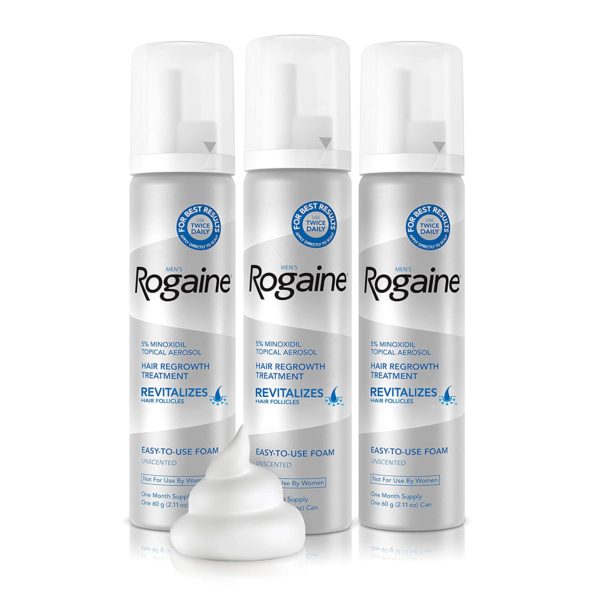
One of the other FDA approved treatments for hair loss is minoxidil, a compound that is applied directly to your scalp twice per day.
Its use is also the result of a lucky pharmaceutical discovery: it was originally being researched for another condition, but researchers noticed that patients receiving minoxidil tended to spontaneously regrow hair. It’s one of the best-researched treatments for hair loss, and it’s especially effective at treating what’s called “vertex balding”—bald spots on the top of your head.
Why Rogaine? It’s got the right concentration (5%) and the right delivery mechanism (foam). Other products offer different concentrations, or a liquid vial for applying the compound to the scalp, but the Rogaine foam method is the one that’s supported by the scientific research.
2. Essential Elements Hair Hero
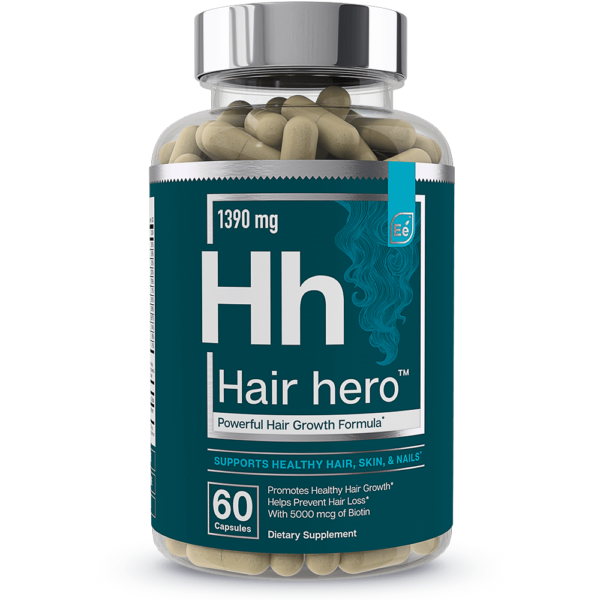
Hair hero, by Essential Elements, provides a powerful formula to maximize hair growth from all angles. The collagen, Horsetail and Bamboo Extract all provide the building blocks necessary for follicle regrowth while the biotin delivers the key nutrients to facility maximum growth.
In addition, they included saw palmetto extract which has-been shown to improve hair account by almost 12% in just four months.
3. Hair La Vie Clinical Formula
Hair La Vie Clinical Formula contains a proprietary blend of 20 clinically studied natural ingredients, including flaxseed, selenium, vitamin D3, zinc, and reishi mushroom, to thicken hair and reduce damaged follicles. None of Hair La Vie’s products are ever tested on animals.
It also includes EVNol Max, which are vitamin E Tocotrienols that boost the immune system to support optimal hair growth. All ingredients are free of gluten, dairy, preservatives, and GMOs.
4. Folexin
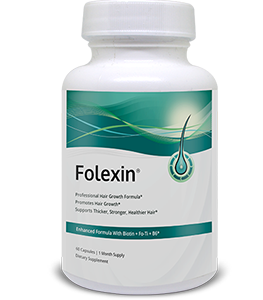
Click here for the lowest price
This is our top pick for a natural solution…
With Folexin, you can get your hair back, and make it visibly more radiant and lush.
Folexin may actually counteract the genetic, hormonal, and environmental factors that lead to hair loss—by giving your hair the nutritional support it needs.
Ingredients include biotin, which is known to improve hair, nail, and skin health; Fo-Ti, which the Chinese have used for centuries to nourish gray hair; and a host of natural ingredients proven to help hair grow, become stronger, and develop a better texture.
Be aware, while this product has biotin in it, it isn’t pure biotin. If that’s what you’re looking for, check out our top biotin rankings here.
5. Hair Growth Support + by Nuzena
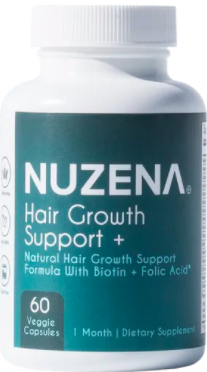
Click here for the lowest price
Nuzena is a brand-new supplement company known for their potent formulas.
Nuzena’s Hair Growth Support + contains several ingredients that help to promote hair growth such as biotin, folic acid, and Fo-Ti — ingredients we have seen before, but are in larger dosages here.
It also contains several vitamins and trace minerals that help to support hair volume and nourish hair quality — something we know is also important for people looking for hair growth supplements.
Nuzena claims that their formula will “support hair growth, hair volume, and hair structure” and by looking at the ingredients inside the formula we can certainly see why.
Another encouraging sign for first time buyers is that there are plenty of verified positive customer reviews on their website — a great sign to see.
Easily a top-3 option and one of the cheapest options, too.
6. Nizoral A-D Shampoo
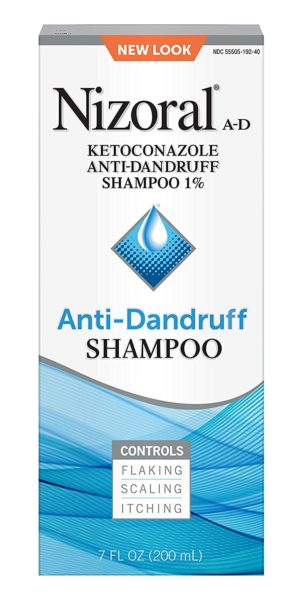
This shampoo was developed to treat dandruff, but did you know that the same fungus that causes dandruff can contribute to hair loss?
Moreover, research suggests that the active ingredient in Nizoral A-D, called ketoconazole, can actively fight inflammation at the scalp, leading to hair regrowth. The current best practice is to use Nizoral A-D in place of your normal shampoo three times per week.
7. TruePure Biotin Serum
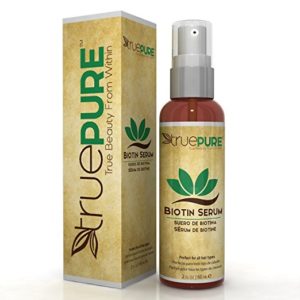
Biotin is one supplement with a solid track record when it comes to improving the condition of your hair. Stronger and better-growing hair follicles are what you’re after, so TruePure’s biotin serum is an excellent way to accomplish this.
It has additional ingredients like red clover and caffeine, which are designed to further amplify the activity of your hair follicles.
Be aware, this isn’t pure biotin. (If that’s what you’re looking for, check out our top biotin rankings here.) TruePure Biotin Serum was designed specifically to address thinning or balding hair, so it contains biotin as well as other ingredients known to reverse thinning or balding hair.
8. PureBiology RevivaHair
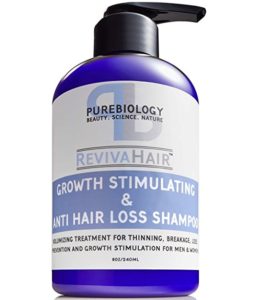
PureBiology makes a topical ointment that you can apply directly to your scalp to help boost your hair production. It combines a number of ingredients that can help with hair strength and growth, like biotin and keratin.
It’s very well-reviewed, and while it’s not a substitute for the top-rated hair loss treatments, it’s a worthwhile addition to your routine.
Be aware, while this product has biotin in it, it isn’t pure biotin. If that’s what you’re looking for, check out our top biotin rankings here.
9. Zhou Hairfluence
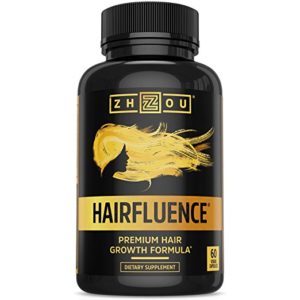
Zhou Nutrition has a strong reputation for well-crafted supplements, and that’s definitely the case with Hairfluence.
The strategy employed with this supplement is to deliver all of the requisite ingredients to grow and strengthen hair, plus some extras that may help. It has a balanced mix of B vitamins, biotin, collagen, keratin, and MSM, and it’s extremely well-received by its users.
Be aware, while this product has biotin in it, it isn’t pure biotin. If that’s what you’re looking for, check out our top biotin rankings here.
10. HairMax Prisma 9 LaserComb
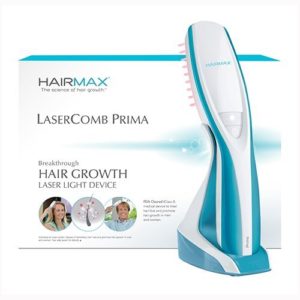
HairMax uses a technique called low-level laser therapy to directly stimulate hair follicles to produce more and stronger hair. The scientific evidence for this treatment is sparse, but there are some studies that exist supporting it.
It’s not as easy to use as some of the other treatments on this list, so thanks to this and the inconvenience of using the comb, it doesn’t rank particularly highly, but it’s worth a shot if you want to attack your hair loss with every available tool.
11. Ultrax Labs Hair Surge

Could caffeine in shampoo jump start your hair follicles the same way a cup of coffee can jump-start your brain? That’s the proposition that Ultrax Labs Hair Surge is based upon.
There’s some preliminary research indicating that caffeine in shampoo can penetrate down to the hair follicles in a matter of minutes, but whether this actually boosts hair growth over the long term is still up in the air.
12. Pura D’or Hair Thinning Therapy
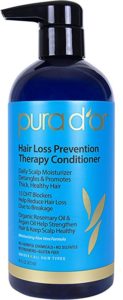
Pura D’or advertises its hair serum as containing many of the key ingredients for hair growth and stimulation.
While it does have biotin and niacin, it also has a tremendous number of other ingredients which haven’t been proven useful for treating hair loss. It’s asking a lot to use this serum for just a couple of its ingredients.
Category winners
Best hair loss treatment overall: (combo) Rogaine Foam plus Finasteride
For stopping hair loss and stimulating hair growth, there’s no beating the one-two punch of minoxidil and finasteride. These two work synergistically to shut down the pathways that lead to hair loss, making the combo more effective than either alone.
Best hair loss treatment for crown of head: Rogaine Foam
Minoxidil foam (aka Rogaine) has been heavily-studied for hair loss on the crown of your head, and it’s been repeatedly proven to increase the number and size of hair follicles in that region. On top of that, it can be applied directly to the area of greatest hair loss.
Best hair loss treatment without minoxidil or finasteride: Essential Elements Hair Hero
Looking for something to add to your hair loss treatment regimen? Essential Elements Hair Hero is the way to go—it provides essential nutrients like biotin, collagen, and horsetail extract that stimulate the growth of thick, strong hair follicles.
Best non-topical hair loss treatment: Finasteride
Not interested in topical oils and foams? Finasteride is a once-daily pill that’s still an incredibly effective way to treat hair loss that’s easy to use as well.
Best hair loss treatment for younger men: Rogaine Foam
The one drawback to treatments like finasteride is the potential for sexual side effects. Though rare, younger men might be disinclined to risk these side effects—for them, minoxidil foam is a great first-line choice.
Best hair loss treatment for thicker hair: Essential Elements Hair Hero
Stopping hair loss is one thing, but what about strengthening the hair you already have? Essential Elements has put together a great combination of both herbal ingredients, like saw palmetto, biotin, and bamboo stem; plus vitamins like vitamin K, riboflavin, and niacin that all support the growth and strengthening of hair follicles.
Who should buy a hair loss treatment?
Hair loss becomes increasingly common as men get older. If you’ve noticed hair starting to accumulate in your sink drain, your hairline starting to recede around your temples, or thinning in your hair on the crown of your head, you should seriously consider a hair loss treatment.
Starting sooner rather than later is best; modern hair loss treatments are pretty effective when it comes to halting hair loss, but actually stimulating regrowth is more difficult.
It does happen, but you can’t count on a miracle. Better to start hair loss treatment now than to wait until you’ve already lost a lot of hair.
While people typically associate hair loss with middle age, many men start to lose their hair in their twenties, or even their late teenage years.
Without hair loss treatment, these men are likely to be completely bald by their early thirties. Some men can rock a bald head, but if you don’t want to be relegated to one hairstyle for the rest of your life, get a hair loss treatment now versus later.
Even if you think you’ll eventually get a hair transplant, most hair transplant doctors will insist that you use some kind of hair loss treatment for six months or a year minimum beforehand to stabilize your hair follicles, and so your transplants don’t fall out too.
Regardless of whether you opt for a hair transplant some day, you’ll need to be on a hair loss treatment, so better to do it sooner rather than later.
How we ranked
Our rankings of hair loss treatments are based on scientific research first and foremost. As you might imagine, there’s quite a market for hair loss treatments, given that half of men end up with it, and almost all of them would (if given the choice) rather keep their hair.
The size of this market has inspired a lot of great products, but also a lot of quack remedies that don’t actually work. We made a list of treatments that have been proven to work by scientific research, which in the case of hair loss is pretty easy to assess.
A doctor who is unaware of the treatment can count the number of hair follicles in a given area (say, in one square inch) before and after the treatment.
When compared to a placebo treatment, a real treatment will show an increase in hair follicles—or at least slowing or halting of a decrease. After a careful review of the scientific research, our research team came up with a list of several potentially effective compounds and methods for treating hair loss.
Two of these, finasteride and minoxidil, were clearly the best options. Finasteride requires a prescription, so you’ll have to talk with a doctor about getting access to it, but it’s the easiest and most effective way to keep your hair.
The second most effective treatment we found was minoxidil, which is a compound that’s delivered directly to your scalp in a foam or liquid. Most men know this treatment as Rogaine, which makes them suspicious of whether it really works, but the evidence is a clear yes.
When it came to minoxidil products, we chose only those that had the concentration and the delivery format that’s been proven effective in clinical research—that means a 5% concentrated foam.
Beyond finasteride and minoxidil, we found a bevy of other potentially useful treatments, including biotin, folic acid, ketoconazole, and laser combs, to name just a few.
These treatments tended to be supported by fewer or smaller studies, which makes it hard to put them on the same tier as finasteride and minoxidil, but still makes them worth considering.
We rated remaining products that contained these ingredients or used these modalities based on the amount of evidence supporting their ingredients, and how well the dosages or specifications of the product lined up with what’s been used in the relevant scientific research.
Lastly, we ranked all of the products based on likelihood of efficacy. That meant that finasteride and minoxidil came out on top, of course, with the remainder following according to the caliber of their ingredients or their treatment modality.
While there’s still quite a lot of research coming out on new avenues of treatment for hair loss, we’re confident that these are the best treatments available right now.
Benefits
The best treatments for hair loss out there are finasteride and minoxidil, often sold under the name brand Rogaine. A small number of men have reported side effects taking finasteride, but that number seems to be less than 4%.
Rogaine is consistently safe in men and can cure hair loss over 50% of cases (1). It also seems to be more effective in the crown area.
The one note with minoxidil is that it needs to be applied early. This drug works by restarted dormant hair follicles for those with male pattern baldness. If too much time passes between hair loss and treatment, you may not be able to revive your hair follicles and continue balding.
Biotin may improve hair proteins. Biotin is one of the best known, and best researched, hair health supplements. While it can improve hair health, it cannot cause hair growth by itself if you’re not deficient in biotin. It can be difficult to be biotin deficient because you need such a small amount every day.
In addition, biotin doesn’t work in isolation, so you’ll need other vitamins and minerals to create a complete hair health plan of action.
Keratin can be effective for improving hair quality as well. Keratin hair treatments are popular and said to straighten out hair to make it more manageable while enhancing color and shine.
There are no dangerous side effects from this treatment, but it seems keratin products can be packaged with formaldehyde making it unsafe.
Some evidence suggests that DHA (omega 3 fatty acid found in fish oil) could reduce hair loss. Omega 3 fatty acids (EFA) are common hair supplement said to increase hair shine and hair health. Studies show that these essential fatty acids can support skin and hair health; however, the effect is insignificant unless you are actually deficient in these essential fatty acids.
For example, one study saw that chemotherapy patients that suffered from hair loss could prevent further damage by supplementing with DHA (2). DHA is one supplement you shouldn’t be skimping out on.
Hair growth supplements containing too much selenium could cause hair loss. Selenium is an important micronutrient, but a small amount goes a long way. While selenium is key for growth and reproductive health, if you consume too much you can cause hair loss (3). Just over 400 mcg per day can lead to hair loss, which is about 4-5 Brazil nuts a day!
When supplementing, it is important to be aware of the different food and non-food sources of vitamins and minerals you consume to be sure not to cause your body any damage.
Conventional antidepressants can lead to baldness. Hair loss can also be caused as a side effect from conventional antidepressants.
Specifically, tricyclic antidepressants such as Amitriptyline, Amoxapine, and Nortriptyline may lead to hair loss (4).
Similarly, herbs such as St. John’s Wort can lead to hair loss through a similar mechanism (5). If you’re on antidepressant medications and experiencing side-effects definitely talk with your doctor to see if modest lifestyle changes such as improving nutrition and exercise can lessen or eliminate the need for antidepressants.
Zinc supplementation supports faster hair growth. Low zinc levels may be to blame for thinning balding hair. Zinc is essential in processing vitamin A to produce carotene (6). Without carotene, your hair won’t grow as fast as it did in the past leading to slower and slower hair growth until your hairline starts to recede faster than it can grow.
Pumpkin seed oil may be able to boost hair growth by up to 40%. Men with male pattern baldness were treated with 400 mg of pumpkin seed oil a day for 5 months. After 24 weeks, the men treated with the pumpkin seed oil saw 40% more hair growth than those with no treatment on the placebo group (8).
If you’re looking to improve hair growth, having pumpkin seed oil in your diet seems like a good idea. Otherwise, having a few pumpkin seeds thrown in is an excellent idea to support health hair and healthy hormones to keep your hair looking its best (plus they taste pretty darn good).
Frankincense can be supplemented for stronger hair roots. Boswellia serrata, or Frankincense, is a common ingredient from Indian used in hair health products. While Frankincense doesn’t grow hair, it does support the health of hair roots so you are able to strengthen the hair you have or set up a stronger foundation to regrow hair (9).
While it is not a proven hair growth remedy, it is often added into many formulas to try and improve results.
Supplement with copper can improve hair pigmentation. Hair is often used to assess the mineral status of the body. It’s similar to how you can chop a tree down to find its age by counting the rings. As you age and your hair grows you have a few months to years of a snapshot depending on how long your hair is.
Your hair can show how much arsenic, zinc, copper, and other minerals you have had in the body.
If your hair is looking lackluster and not as brilliantly dark as you’d like, there is evidence that by supplementing with copper, or including more copper-rich foods in your diet, you can improve your hair color (10).
Caffeine decreases levels of hormone that slow hair growth down. Interestingly enough, hair growth seems to be a hormonal issue. When your hormones are optimized you not only gain lean muscle mass, burn more fat, and feel more energetic, but also your hair looks fantastic.
Male pattern baldness seems to be a hormonal imbalance because the hair follicles are dependent on hormones such as DHEA and testosterone to mature and start growing hair.
Caffeine seems to override this mechanism and stop whatever is holding back the hair follicles from maturing to increase hair growth modestly (11).
Iodine levels can indirectly lead to hair loss. The thyroid is a key thermostat in the body in terms of vitality and energy metabolism. Without enough iodine, your thyroid can slow down and lead to a whole slew of side effects. One such side effect is hair loss (12). However, by correcting an iodine deficiency you should be able to reverse these symptoms and increase your health if you start early.
Use Cellulose for stronger hair. Cellulose, the strong fiber from plant cell walls, has been seen to reinforce hair fibers for added strength (13). This makes your hair more resilient from breaking or loss, allowing you to have thick healthy hair that can look great no matter what.
Silicon can boost hair thickness. Silicon, found in raisins, brown rice, green beans, oats, nuts, root vegetables, and spinach, has been seen to increase hair thickness (15). Again, you can take supplements that supply silicon but you can easily find enough in your diet — even red wine has a significant amount of silicon.
Collagen is hotly debated for hair health. Collagen is a protein structure that essentially holds everything together in the human body. This includes hair, too.
By the hair follicle are collage proteins that help to support and ground the follicle so the hair can grow long and strong without worry of easily falling out (16).
The issue seems to be on how this interaction works specifically when you supplement with collagen because you’ll have to degrade it through the digestive process. More research is needed to see if collagen supplementation can truly improve hair health.
Use hydrotherapy to get rid of dandruff. Aside from supplements, there are several lifestyle factors that can improve the health of your hair and scalp. One of the big issues that kills your hair’s health is dandruff.
Essentially, your scalp becomes overly dry and the skin begins to flake affecting your hair at its roots. By choking off your hair’s roots you’re making your hair start to thin out. This cycle can turn vicious as less hair means less protection for the skin on your head, leading to worse dandruff and greater hair loss.
One cause of this is hot showers. By taking hot showers and washing your hair in this hot water, you are washing away the natural oils in your hair that work to keep your scalp happy and hair radiant (18).
Without oil in your hair, you begin to see your scalp flake and start the vicious cycle of hair loss. Alternate cold water in your shower to wash your hair will support scalp health and increase the shine and strength of your hair.
Use baking soda and apple cider vinegar to battle hair acidity. Another issue at work here is your hair’s acidity. Most conventional shampoos or conditioners will just as easily wipe out your hair’s natural oils and ruin the environment on the scalp, making it easy for you to begin losing hair (19).
Common hair care methods include using baking soda and apple cider vinegar.
The baking soda works as an alkaline solution to wash your hair, then the apple cider vinegar comes in as an acid to remove the baking soda and condition your hair. It only takes about 1 tablespoon of each in a pint of water to do the trick. I recommend using a squeeze bottle for convenience.
Be careful about hair care scams. As you can see, there are many anecdotal stories and case studies on different ingredients providing different benefits for hair health. While there a few reputable supplement companies out there with products that give you results, there are twice as many companies that have inferior products and will gladly take your money (20).
Always be wary of marketing promises and be sure to look out for the ingredient list to see what you’re truly getting.
Side effects
Halting or reversing hair loss is tricky business, because the primary cause is testosterone: hair follicles react to the presence of testosterone and die off.
You obviously don’t want to cut down on your whole body testosterone levels, since having high testosterone is important for maintaining muscle mass, libido, and low body fat levels.
Different hair loss treatments tackle this problem from different angles: finasteride is an oral medication that only blocks a certain sub-type of testosterone called dihydrotestosterone that causes hair loss.
Theoretically, this shouldn’t affect the other forms of testosterone, but because of its systemic effects, finasteride does slightly increase your risk for erectile dysfunction and low libido. While only around 4% of men will develop these symptoms, they are very frustrating for the men who do develop them.
Minoxidil is applied locally to your scalp, so even though it blocks testosterone, it doesn’t have the same negative side effect profile as finasteride.
It does, however, carry the risk of scalp irritation, chest pain, or light-headedness, though these side effects are rare. Minoxidil can cause a paradoxical effect called “shedding,” where hair loss appears to increase soon after using it. This is not permanent, however; many of these shedded hairs will grow back thicker and stronger.
Supplemental ingredients like biotin and folate are quite attractive because they have very mild side effect profiles. Biotin is so safe that no side effects have been attributed to it, and aside from a few obscure prescription medication interactions, the same is true with folate.
While these hair loss treatments have less evidence for their efficacy, they also have a milder side effect profile.
Recommended usage
The two most powerful hair loss treatments (finasteride and minoxidil) are both super easy to use as well. Finasteride is a once-daily medication; you might get it in 1 mg tablets to take once per day, or you might have to cut 5 mg tablets into quarters using a pill cutter.
Either way, take these once per day. Try to be consistent about it; but it’s not a huge deal if you miss a day once in a while, since finasteride binds tightly to cells in your body. A single dose can suppress levels of dihydrotestosterone for up to four days (21).
Still, try to take it every day for best results! Using minoxidil is pretty easy as well. It needs to be applied to your scalp twice per day. The best time to put it on is after you’ve showered and dried your hair, not before showering.
You should also allow it to dry before putting other hair products in place. Correct usage of hair loss supplements is pretty similar to using finasteride; they tend to work best when taken on a regular schedule (though specifics may vary according to the precise ingredients used).
FAQ
Q: Do hair loss treatments really work?
A: Skepticism is understandable when it comes to hair loss treatments, since there are a lot of quack remedies out there.
However, there are some specific, well-studied hair loss treatments that we can strongly recommend: first among these are finasteride and minoxidil; these are both FDA-approved, effective treatments that can halt or reverse hair loss.
Some smaller studies have also suggested that supplements that contain biotin, folate, or a few other compounds could also help with hair loss, but “fin” and “min” are definitely the big guns. And for many men, these treatments really do work: they can halt hair loss in its tracks, and even help regrow lost hair.
Q: Can you grow hair back after thinning?
A: Yes, many men do experience hair regrowth after starting hair loss treatments, especially in the first few months.
However, these gains tend to be incremental, and only rarely are miraculous: you’re probably not going to go from a “power donut” to the same full head of hair that you had when you were 18.
Many clinical studies do provide strong evidence that treating hair loss does lead to an increase in the number of hair follicles in balding areas on your head; however, there’s a limit to how much you can actually regrow.
The best strategy is to go full-bore on hair loss treatments for six months or a year, and evaluate your progress. If you’re still not happy, you can consider more aggressive treatments like hair transplants.
Q: What kind of hair loss treatments are available and proven effective for men to use at home?
A: The most effective treatment you can use by yourself at home is definitely minoxidil foam. Look for a 5% concentration, and preferably foam: while liquid-based treatments are available as well, they tend to create more scalp irritation, and the landmark clinical trials that established the efficacy of minoxidil for hair loss used foam, not liquid.
You can’t get finasteride at home, but it’s worth mentioning as well, since it’s so easy to use (once you have a prescription) and is very effective.
Q: What kind of doctor should you see for hair loss?
A: For getting started with a hair loss treatment, often all you need to do is see your primary care doctor. If your primary care physician is sympathetic, you can often get a prescription for 1 mg or 1.25 mg finasteride in a single visit.
If you don’t have any luck with your primary care doctor, services like Keeps and Hims offer medical consultations to get you a prescription for finasteride. For some treatments, like minoxidil, you don’t need a prescription at all. If you are in the market for platelet rich plasma (PRP) or hair transplants, you should see a doctor that specializes in hair loss.
Q: What is PRP treatment for hair loss?
A: PRP stands for platelet rich plasma, a treatment that was originally developed to treat sports injuries. In PRP, blood is removed from your body, spun in a centrifuge to concentrate growth factors, and re-injected into a specific area.
PRP has become popular for treating hair loss as an intermediate between conservative treatments like minoxidil and finasteride and more intensive treatments like hair transplants. Early results are promising, but relatively few high-quality studies have been done (22).
It’s worth a shot if you want to move beyond basic conservative treatment, but aren’t ready for a hair transplant yet.
Q: Can aloe vera work for hair loss?
A: Aloe vera is an incredibly popular natural remedy for skin, and it’s also popular for treating brittle hair.
However, there’s scant evidence to directly support its use in stopping or reversing hair loss, according to a 2008 study published by researchers in India in the journal Pharmacognosy Reviews (23).
Aloe vera is great for your skin (and many other applications as well), but look elsewhere if you want an evidence-based treatment for hair loss.
Q: What’s the most effective hair loss treatment?
A: The most effective way to treat hair loss appears to be a combination of finasteride daily and 5% minoxidil foam twice daily.
A randomized controlled trial compared the efficacy of finasteride alone, minoxidil alone, and finasteride plus minoxidil over the course of one year (24). The study found that the most effective treatment was the combination of both together, reinforcing the benefits of combined treatments for hair loss.
Related articles
Recap
For those developing baldness right now, finasteride or Rogaine or other treatments using minoxidil is your best bet along with taking better care of your hair. Take finasteride at a dose of 1 to 1.25 mg every day, and use a 5% minoxidil foam twice daily.
Some emerging evidence suggests that supplemental ingredients like biotin, folate, and other natural compounds may help with hair loss, but the evidence isn’t nearly as strong as the evidence in favor of finasteride and minoxidil.
For BodyNutrition‘s #1 hair loss treatment recommendation, click here.
